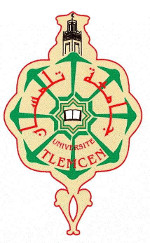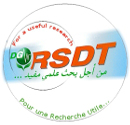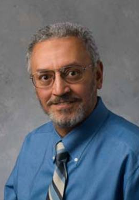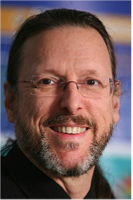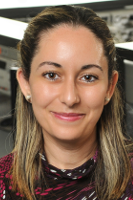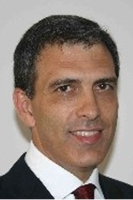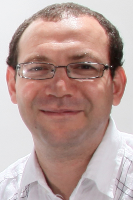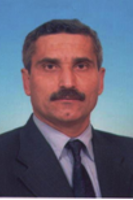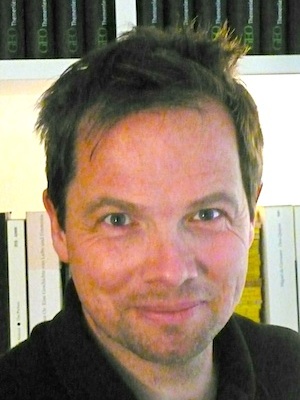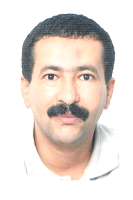Guest Speakers
Pr. KHALIL Hassan
Hassan Khalil is actually University Distinguished Professor at Michigan State University.
He obtained his Ph.D., Electrical Engineering, University of Illinois 1978 and M.S., and BS., Electrical Engineering, Cairo University 1975 and 1973.
Principal research interests: robust and adaptive control of nonlinear systems, singular perturbation methods in control. He is currently a University Distinguished Professor of Electrical and Computer Engineering. He has published several papers on singular perturbation methods and nonlinear control.
He is the author of Nonlinear Systems (New York: Macmillan, 1992; Upper Saddle River, NJ: Prentice Hall, 1996 and 2002) and a coauthor of Singular Perturbation Methods in Control: Analysis and Design (New York: Academic, 1986; Philadelphia, PA: SIAM, 1999).
Khalil is a fellow of the Institute of Electrical and Electronics Engineers (IEEE) as well as a fellow of the International Federation of Automatic Control (IFAC).
Title of the presentation: Extended High-Gain Observers in Nonlinear Feedback Control
Abstract:
High-gain observers have evolved as one of the useful tools in nonlinear feedback control. This talk will describe an extension of the theory to the so-called Extended High-Gain Observers (EHGO).
The talk will describe the use of EHGOs as disturbance estimators and soft sensors of the internal dynamics. The use of EHGO as disturbance estimators is based on the work of Freidovich and Khalil (IEEE Trans. AC, 2008) where the EHGO enables recovery of the performance of state feedback linearization in the presence of model uncertainty.
The use of EHGO to estimate the internal dynamics is based on the work of Boker and Khalil (Automatica, 2013) where the EHGO provides a signal that serves as virtual output for the internal dynamics; hence, allowing the design of internal-dynamics observer, which together with the EHGO estimate the full state.
Pr. RICHARD Jean Pierre
Jean-Pierre Richard received the D.Sc. in Physical Sciences, Ph.D. in Automatic Control, M.S Electronics from University of Lille 1984, 1981 and 1979. Dipl. Eng. 1979, Ecole Centrale de Lille (French “Grande Ecole”) 1979, IEEE SM 1998, SEE SM 2003.
His main research interests concern time-delay systems (stability, control, observation, identification, estimation) and their applications in networked control systems (teleoperation via unreliable networks, asynchronous sampling, collaborative control...).
He is currently a University Distinguished Professor of Automatic Control at the Ecole Centrale de Lille, where he leads the professional training “Research”. He is also in charge of the group CO2 (for “Control and scientific Computing”) at the CNRS Research Center in Informatics, Signal and Automatic control in Lille (CRIStAL) and of the project-team NON-A (“Non-Asymptotic estimation for online systems”) at the INRIA Lille Nord Europe Research Centre.
More details can be found at
http://researchers.lille.inria.fr/~jrichard, including the list of his publications, awards, and former PhD students, as well as some lectures and videos.
Title of the presentation: Time-Delay Systems for Networked Control problems
Abstract: Networks such as Internet or Wireless 802.11 present great advantages for flexible and low-cost networking. However, they are not as reliable as CANs, and integrating them in control applications, while preserving some performance, constitutes an interesting challenge.
It will be explained how using delay models allows for catching many of the effects introduced by the presence of such unreliable networks in the control loops (such as variable transmission times, lost packets, non-uniform scheduling and sampling).
Various theoretical techniques allow for analyzing the resulting models. Some of them need the delays to be constant, which can be obtained by using waiting strategies involving buffers and leading to time-driven solutions. Some other tolerate fast varying delays and allow for event-driven, faster solutions.
Two experimental cases, remote control with state prediction and bilateral teleoperation over Internet, will illustrate the talk.
Dr. BOUAYNAYA Nidhal
Nidhal Bouaynaya (USA) received the B.S. degree in Electrical Engineering and Computer Science from the Ecole Nationale Superieure de L’Electronique et de ses Applications (ENSEA), France, in 2002, the MS degree in Electrical and Computer Engineering from the Illinois Institute of Technology, Chicago, in 2002, the Diplome d’Etudes Approfondies in Signal and Image Processing from ENSEA, France, in 2003, the M.S. degree in Mathematics and the Ph.D. degree in Electrical and Computer Engineering from the University of Illinois at Chicago, in 2007.
From 2007-2013, she was an Assistant then Associate Professor with the Department of Systems Engineering at the University of Arkansas at Little Rock, USA.
In September 2013, Dr. Bouaynaya joined Rowan University as an Assistant Professor with the Department of Electrical and Computer Engineering.
Dr. Bouaynaya won the Best Student Paper Award in SPIE Visual Communication and Image Processing (VCIP) in 2006, the UALR Faculty Excellence Award in Research in 2013, and the Best Paper Award at the IEEE International Workshop on Genomic Signal Processing and Statistics (GENSIPS) in 2013.
She is currently serving as a Review Editor of Frontiers in Systems Biology. Her current research interests are in genomic signal processing, medical imaging, mathematical biology and dynamical systems.
http://users.rowan.edu/~bouaynaya/
Title of the presentation: Optimal Perturbation Control of General Topology Molecular Networks
Abstract: Analysis and intervention in the dynamics of genetic regulatory networks is at the heart of emerging efforts in the development of modern treatment of numerous ailments including cancer. The ultimate goal is to develop methods to intervene in the function of living organisms in order to drive cells away from a malignant state into a benign form.
We develop a comprehensive framework for optimal perturbation control of dynamic networks.
The aim of the perturbation is to drive the network away from an undesirable steady-state distribution and to force it to converge towards a desired steady-state distribution. The proposed framework does not make any assumptions about the topology of the initial network, and is thus applicable to general topology networks. We demonstrate that there exists at most one optimal perturbation that forces the network into the desirable steady-state distribution.
In the event where the optimal perturbation does not exist, we construct a family of suboptimal perturbations, and show that the suboptimal perturbation can be used to approximate the optimal limiting distribution arbitrarily closely. Moreover, we investigate the robustness of the optimal perturbation control to errors in the probability transition matrix, and demonstrate that the proposed optimal perturbation control is robust to data and inference errors in the probability transition matrix of the initial network.
Finally, we apply the proposed optimal perturbation control method to the Human melanoma gene regulatory network in order to force the network from an initial steady-state distribution associated with melanoma and into a desirable steady-state distribution corresponding to a benign cell.
Dr. DI GENNARO Stefano
Stefano Di Gennaro obtained the degree in Nuclear Engineering in 1987 (summa cum laude), and the Ph.D. degree in System Engineering in 1992, both from the University of Rome "La Sapienza", Rome, Italy.
In October 1990 he joined the Department of Electrical Engineering, University of L'Aquila, as Assistant Professor of Automatic Control.
Since 2001, he has been Associate Professor of Automatic Control at the University of L'Aquila.
In 2012 he joined the Department of Information Engineering, Computer Science and Mathematics and he is also with the Center of Excellence DEWS.
He holds courses on Automatic Control and Nonlinear Systems. He has been visiting various Research Centers, among which the Department of Electrical Engineering of the Princeton University, the Department of Electrical Engineering and Computer Science at Berkeley, and the Centro de Investigación y Estudios Avanzados del IPN, at Guadalajara.
He is working in the area of hybrid systems, regulation theory, and applications of nonlinear control.
Title of the presentation: Nonlinear Techniques for Control Problems arising in Automotive Applications
Abstract: The problems arising in automotive applications make the automobile an interesting testbed for high performance controllers. Controllers are necessary to improve characteristics such as security, agility, comfort.
At the same time, they are necessary to comply with more stringent regulations, e.g. to diminish the environmental impact. The availability of modern embedded computing devices, and the introduction of new sensors and actuators, allow the implementation of more sophisticated algorithms for estimation, observation, and control of a variety of physical processes occurring in a modern automobile.
In this talk some of the problems arising in automotive applications will be presented, along with the nonlinear methodologies used to provide a solution.
Dr. BOURI Mohamed
Mohamed Bouri graduated at Ecole Nationale Polytechnique d’Alger and obtained his PhD degree in Industrial Automation in 1997 from the National Institute of Applied Sciences of Lyon (INSA LYON France).
Since 1997, he is at Ecole Polytechnique Fédérale de Lausanne (EPFL). He is mainly active in the field of robot control and robotics design for medical and industrial applications.
Since 2002, he is the head of medical and rehabilitation robotics group at the Laboratory of Robotic Systems (LSRO).
His ongoing research focuses on walking assistive orthosis and rehabilitation devices for lower limbs.
Title of the presentation: Rehabilitation Robotics for Lower Limbs
Abstract: Robotics is increasingly used in rehabilitation therapies for paraplegics, tetraplegics and post stroke suffering subjects. This is mainly due to the opportunity to take advantages of the motorized mobilization providing controlled movements and the possibility to implement different sensory motor feedback strategies. Furthermore, the intelligence of such devices also allows the measurement of the progress of the patient during the therapy and interacts with it.
The exercises may have different objectives depending on the pathology. They may seek to reduce hypertonia, increase the joint range of motion, improve the plasticity behavior of the limb, increase muscular forces, decrease spasms or reach various other objectives. Robotized devices provide repetitive, precise and totally instrumented mobilization of the limbs.
The work concerned with this talk will focus on the state of the art of worldwide lower limb rehabilitation strategies and devices. Developments carried out at the Laboratoire de Sytèmes Robotiques (EPFL) will be presented. The MotionMaker will particularly be discussed. It provides the mobilization of the entire joints of the legs (Hip / Knee and Ankle of each Leg).
The innovative (and patented) adopted therapy associates mobilization and closed loop muscle electro stimulation. The rehabilitation strategy combining mobilization and the sensory feedback through force sensors will be presented and the clinical progress of 20 subjects of the CRR (Clinique Romande de Réadaptation, Sion, Suisse) will be discussed.
The rehabilitation protocol will also be presented with its evaluation and exercise phases.
Pr. BEREKSI REGUIG Fethi
Fethi Bereksi Reguig graduated with the engineering degree in Electronics from the university of Science and technology, Oran, Algeria in 1983 and then with the M.sc degree in modern electronics from Nottingham University England in 1985.
On 1989 he gets his PhD degree from the same University and then joined Tlemcen University as a lecturer in electronics on December 1989.
Since then, he fully contributed for promoting different areas of electrical engineering and electronics as a faculty member. He was leading the group who sets the Biomedical Engineering degree at Tlemcen University.
Since 2000, he is Professor and Director of the research
Laboratory in Biomedical Engineering.
His area of research interests includes Biomedical signal Processing and microcomputer-based medical instrumentation.
He is author of more than 120 papers published in international journals and conference proceedings.
Title of the presentation: Chaos Theory and fractal analysis in forecasting subjects in electrophysiological instability
Abstract:
Electrophysiological instability as far as this presentation is concerned refers to the Electrical cardiac activity illustrated through the Electrocardiogram ECG. The instability may originates from cardiac diseases which, in some situations, lead to heart failure. Therefore electrophysiological instability related to the cardiac system is often evaluated through Heart Rate variability HRV, ECG waves intervals such as ST; QRS or QT.
Many clinicians consider the heart as a periodic oscillator with a rate varying in accordance to the organism demands. However, it has been shown that under physiologic conditions, the heart is not a periodic oscillator conferring complexity to the cardiac system and leading therefore to different behaviors which it may, more or less, exhibit. Such behaviors can be equilibrium, periodicity, quasi-periodicity, deterministic chaos and random behavior.
Indeed, a first hypothesis stipulates that aging and illnesses are characterized with a loss of complexity degrading the capacity of aged persons or patients to adapt to different situations. This can be illustrated through one or more particular behaviors stated above.
The first three behaviors are examples of linear dynamics which have been intensively studied through frequency analysis- and time-frequency analysis whereas the last two are that of non-linear dynamics.
In fact, numerous studies have shown the high correlation of the frequency contents of HRV time series with heart failures. However, in recent years there has been increasing recognition that HRV and ECG waves intervals may represent a much more complex phenomenon reflecting the non-linear fluctuations of cardiac-autonomic outflows in a fractal and perhaps chaotic manner.
Such complex phenomenon are illustrated and discussed with an emphasis on how chaos theory and fractal structure can be applied in forecasting subjects in electrophysiological instability.
Pr. LATOSCHIK Marc Erich
Marc studied mathematics and computer sciences at the University of Paderborn, the New York Institute of Technology and the Bielefeld University.
After several accompanying years in the computer business, he received his PhD in 2001 in the area of multimodal–gesture and speech–interaction for Virtual Reality.
He headed the AI & VR Lab at the Bielefeld University until 2007, became professor for media informatics at the University of Applied Sciences (HTW) in Berlin, and founded the Intelligent Graphics Group at Bayreuth University in 2009.
Marc holds the chair for human-computer interaction at Würzburg University since 2011. His work is interdisciplinary oriented towards human-computer interaction interconnecting real-time 3D graphics and simulation, virtual and augmented environments, Artificial Intelligence, and cognitive sciences.
Title of the presentation: Intelligent, Interactive, Multimodal - Techniques for Future Human-Computer Interfaces
Abstract:
Multimodal interfaces in Virtual, Augmented, and Mixed Realities promise to become novel forms of Human-Computer Interaction, taking into account the requirements defined by the physical, cognitive, and perceptive skills of users.
Central aspect of such interfaces is their interactive nature combined with simulated spatial 3D content and environments, paving way for enhanced embodiment, immersion, and presence. These interfaces comprehensively apply multimodality to the output as well as to the input side of closely-coupled human-computer systems.
A variety of output channels for, e.g., visual, auditive, or haptics stimuli is complemented by multiple interaction paradigms based on direct manipulation, touch, speech and gesture, or even virtual agents. While each of the former I/O-related aspects in itself defines its own sets of requirements and methods to solve it, the highly interactive nature of such systems drastically complicates conceptual and technical solutions.
This talk will introduce the state-of-the-art, from scientific prototypes to computer game technology and will highlight some ongoing developments. Along the way, we will point-out chances as well as critical aspects of this technology which has already begun to enter our everyday lives, from our living-rooms to future work places.
Dr. BOUALLEGUE Kais
Kais Bouallegue is Assistant Professor in the Higher Institute of applied Sciences and Technology of Sousse, Tunisia.
He is an IEEE member.
He got his PhD from National Engineering School of Sfax. He is active member in different industrial companies.
He has served a reviewer for technical papers. Also he has mentored researchers at undergraduate and graduate levels.
Moreover, He has been collaborating with many different international universities. His currently research interests include fractal, chaos, genomic and complex system.
Title of the presentation: Fractal and Chaos in Complex Systems
Abstract:
Fractals and chaos offer a rich environment for exploring and modeling the complexity of nature. In a sense, fractal geometry is used to describe, model, and analyze the complex forms found in nature. Fractals have also been widely not only in biology but also in medicine. To this effect, a fractal is considered an object that displays self-similarity under magnification and can be constructed using a simple motif (an image repeated on ever reduced scales).
Chaotic systems were widely studied in many areas of research. Chaotic systems are highly dependent on initial conditions. Small changes in initial conditions can generate widely diverging or converging outcomes for both bifurcation or attraction in chaotic systems.
In my presentation, I will give a link between the two important mathematical topics: fractal and chaos theory. From this link we elaborate three models of processes which have strong similarities with biology processes such us: mitosis process, meiosis process, duplication process, and crossing over process. We recall our fractal model of chromosome with one centromere and then we describe a new fractal model of chromosome with two centromeres. Some results show that this work can have a great impact on the humanity welfare and may be leveraged to cure of genetic diseases



